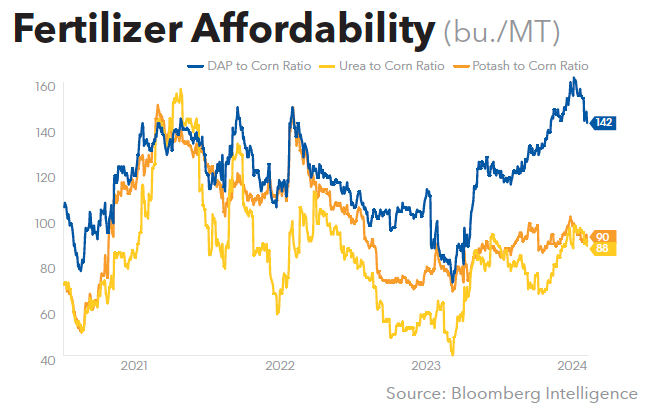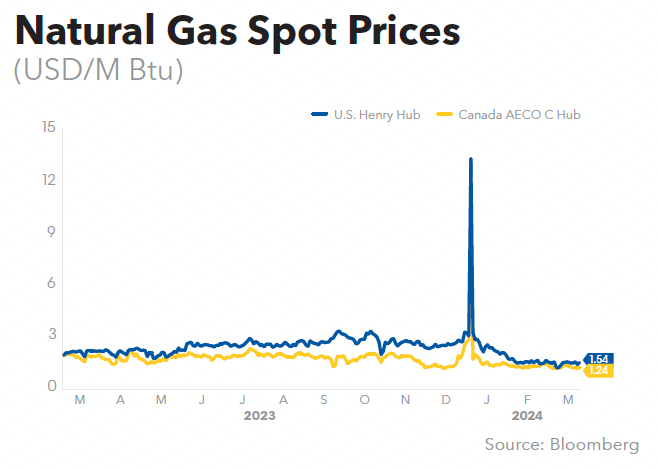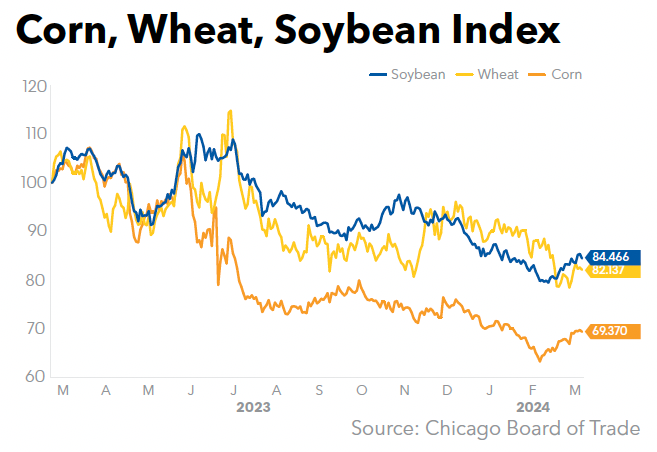





Eastern Cornbelt:
Cooler temperatures moved into the Eastern Cornbelt as the week progressed, with highs slipping closer to seasonal norms after a stretch of warm mid-March days.
A winter weather advisory was in effect for northern Illinois and southern Wisconsin on March 21-22, with forecasts warning of 2-6 inches of snow in some locations. More precipitation was in the weekend forecast and likely to drift southward, slowing preplant ammonia applications in parts of central Illinois.
Highs in the 40s and 50s were reported across Indiana at midweek, with some locations seeing 60-degree readings as the week progressed. Temperatures in central Ohio were lower, falling to the upper-30s and low-40s as a cold front ushered in rains late in the week and into the weekend.
An Ohio source late in the week reported “some P&K and wheat topdress nitrogen going on, along with some pasture spreading as growers try to beat the next wave of rain coming in tomorrow evening.”
Western Cornbelt:
Warm, spring weather prevailed over Nebraska for much of the week, with highs reaching the 60s in central and southern areas of the state and up to the 70s in western Nebraska.
Northeastern areas of Nebraska were expecting a mix of rain and snow on March 22, but the heavier accumulation was aimed at northeastern Iowa, where weather advisories warned of 2-6 inches of snow on March 22.
Iowa sources reported a busy week for spring fieldwork and fertilizer application. “We have been busy and prices have moved up as most were not ready for the early open-season,” said one Iowa contact early in the week.
California:

After experiencing dry weather for most of the week, California was bracing for a wet weekend as storms move in from the Pacific.
Rain was expected to start in the San Francisco Bay Area and Sacramento on March 22 before reaching Southern California on March 23-24. While up to an inch was possible in Northern California, southern areas of the state were expecting a half-inch at most. Higher elevations in the Sierra Nevada were expecting 12-18 inches of snow from the system.
The state of the Sierra Nevada snowpack was close to the historical average as of March 20, ranging from 114% in the north to 92% in the south, or 101% overall, according to the California Department of Water Resources.
Pacific Northwest:
Record highs in the mid-70s and even low-80s were reported across western Washington at mid-month. Parts of Oregon also notched or tied some daily records early in the week, including a high of 80 in Hermiston.
Unseasonably mild weather was also reported across Montana and Idaho for most of the week, with highs reaching the low-60s. Cooler weather was on tap for the coming weekend, however. Both Seattle, Wash., and Portland, Ore., were expecting several rounds of drenching rain on March 22-23 as part of a Pacific weather system moving into the region.
Western Canada:
Multiple high temperature records were set across British Columbia early in the week, while parts of Alberta were hit with heavy snow at midweek. The weather was described as clear and crisp across much of Saskatchewan and Manitoba late in the week.
Southern Alberta had been expecting a potentially early start to spring fieldwork after a run of warm, dry days. The winter storm that hit western and southern Alberta on March 20-21 dropped as much as 10-30 cm of snow, however, prompting snowfall warnings from Environment Canada at midweek.
Snow and cooler temperatures also hit southern Saskatchewan during the week, where sources said spring fieldwork is likely to start on April 15-20 this year.
US Gulf:
Guidewall repairs at Bayou Sorrel Lock set to run through Oct. 30 blocked travel from 7 a.m. to 4 p.m. daily, resulting in delays up to 12 hours.
Repairs underway since Feb. 5 at the Ellender Bridge, at Mile 243 of the West Canal, limited weekday travel from 7 a.m. to 5 p.m. through April 12. Planned bridge repairs at Mile 63 of the Port Allen Route will close the area to navigation from 7 a.m. to 7 p.m. on April 19, 21, and 23.
Bayou Boeuf Lock repairs will make navigation unavailable from 7 a.m. to 6 p.m. on April 1-30. Additionally, shutdowns on the books for April 2-5 and April 9-12 will completely block passage through Bayou Boeuf Lock for 83 hours at a stretch.
Daytime repair closures at Brazos Lock in progress since late August are set to continue indefinitely, sources said, halting navigation daily from 7 a.m. to 7 p.m. Wait times were reported in a wide 5-25 hour range. The effort was previously scheduled to finish on Feb. 29.
Port Allen Lock delays were noted up to 21 hours during the week, while Corps data showed wait times as high as 46 hours at Industrial Lock. Algiers Lock waits peaked around 12 hours on March 20, and intermittent 5-13 hour delays were reported at Calcasieu Lock.
Mississippi River:
Loading drafts were reduced by approximately 10% on travel through the St. Louis area due to low water levels, sources said, while maximum loading drafts were cut by 5-10% between St. Louis and Cairo, Ill.
Northbound drafts were reportedly limited to 9.5 feet between Columbus, Ky., and St. Louis, while tows traveling downriver saw 10.5-foot draft limits. Tow lengths were capped at 24 barges.
The river gauge at St. Louis showed 4.95 feet of depth on March 20, up from 2.0 feet at last report. Forecasts expected levels to recede to 1.1 feet on April 3.
The last of the Upper Mississippi River’s locks returned from winter shutdowns on March 16, sources said, marking a full return to navigation. Wait times approached five hours at both Lock 24 and Mel Price Lock during the week.
Dredging underway at Miles 0-22 of the lower river will reportedly run nonstop through April 1, though the operation could continue intermittently through the end of August, sources said. Tows were required to pass at lowest safe speeds.
Illinois River:
Travel was unavailable from 7 a.m. to 12 p.m. at Miles 296-296.7 on March 20-21 due to fish barrier testing. The closures are scheduled to repeat on April 3-4. Brandon Road Lock was closed to daytime travel on March 19-20 for miter gate motor and brake assembly installation. Dresden Island Lock is scheduled to go offline for similar work on March 26-27.
Mechanical dredging at Miles 244.2-244.5, reported to begin on March 11, will remain in operation Monday through Thursday from 6:30 a.m. to 5 p.m. until further notice.
Loading drafts on the Illinois River were noted at a maximum 9-10 feet during the week, depending on location and direction of travel, an approximate 5-10% reduction from typical levels. Wickets were in the lowered position at Peoria Lock and LaGrange Lock, allowing vessels to transit both sites without locking.
Ohio River:
Delays continued at Meldahl Lock due to an unplanned main chamber shutdown, leaving vessels to wait up to 22 hours for passage through the smaller auxiliary chamber. Repairs were expected to continue into late March.
Valve repairs at Greenup Lock were reportedly underway through April 12, while scheduled work at Cannelton Lock and Markland Lock is expected to slow travel from April 22 to June 7. Markland Lock will see additional delays on June 10-28 for miter gate repairs.
Racine Lock will undergo machinery repairs between June 1 and July 11, and dewatering and miter gate repairs will run June 15 through Nov. 7 at Hannibal Lock. A project at Belleville Lock will necessitate non-concurrent shutdowns of the lock’s primary and secondary chambers for 30 days apiece during the second half of the year, sources said.
Delays at Kentucky Lock, on the Tennessee River, were reported in a wide 5-20 hour range, while boats waited up to nine hours to transit Wilson Lock. The Cumberland River’s Old Hickory Lock is closed to overnight travel through April 1, while a complete shutdown is scheduled for April 1 through May 9.
Arkansas River:
The Van Buren Bridge, located at Mile 300.8 of the Arkansas River, will close to navigation on Aug. 16-Sept. 8 for miter gate inspections. The Corps is currently planning to pass waiting vessels after the ninth day of work, sources said.
German-based MAN Energy solutions plans to offer ammonia-powered engines after 2027, according to CEO Uwe Lauber.
Taiwan Power Company, Sumitomo Corporation, and IHI Corporation have announced a MOU to study the ammonia combustion technology, aiming to conduct demonstration tests in Taiwan with ammonia firing in power units with concentrations of at least 5% by the end of 2030.
AFC Energy reported that it has achieved a milestone with its modular ammonia cracker, achieving better-than-expected operating efficiency using less than one-fifth of the power demand to create hydrogen from an equivalent-sized electrolyzer.